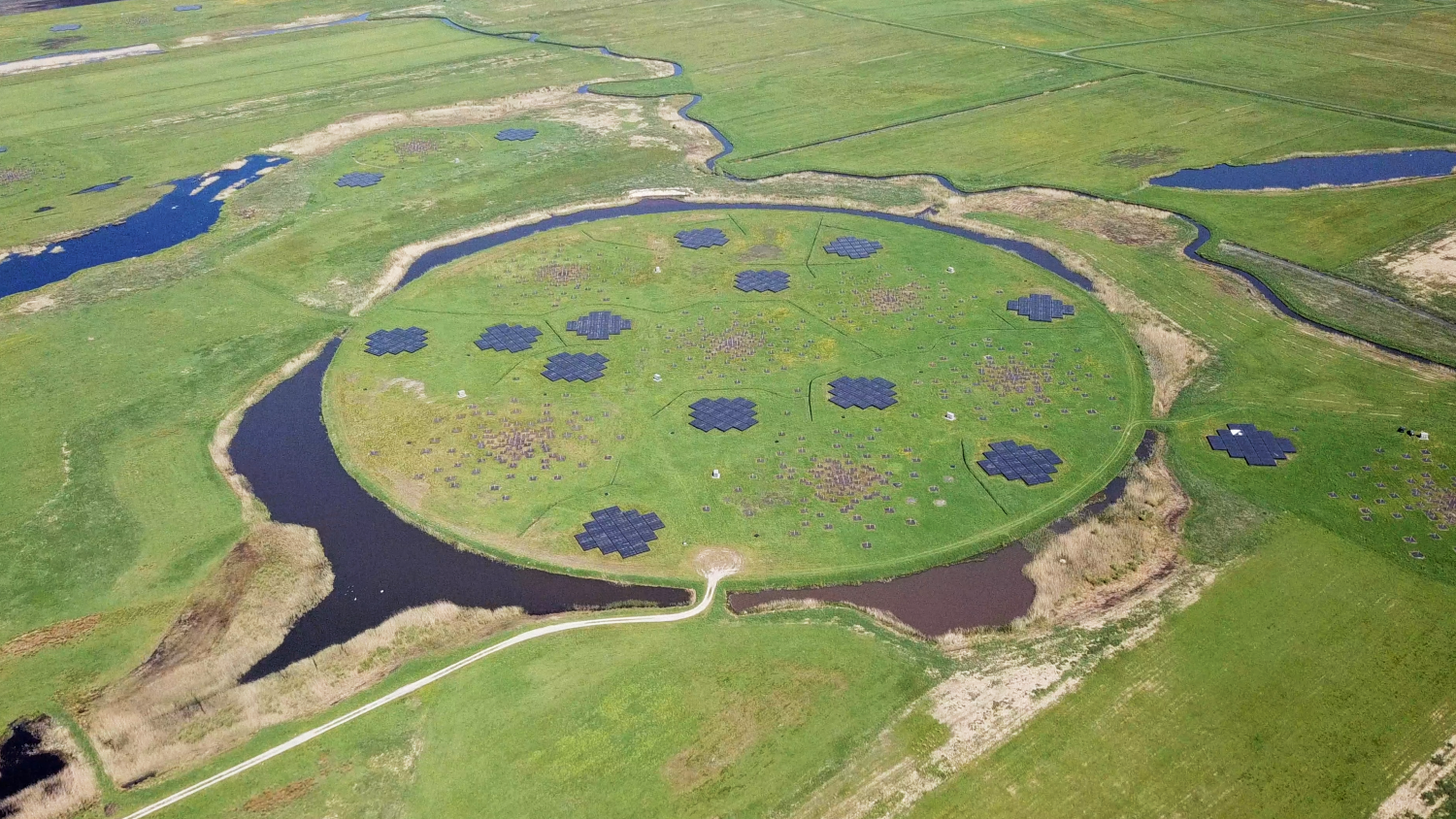The Netherlands

At a glance
- SKAO contracts awarded: Three major contracts awarded to Dutch companies, creating jobs and generating economic activity in high-tech sectors including software development, advanced computing hardware, and precision optics manufacturing.
- Research community impact: Strong Dutch presence across all scientific working groups, positioning the Netherlands as a leader in global radio astronomy and big data science.
- Coordinating body: Ministry of Education, Culture and Science represents the Netherlands in the SKAO Council. ASTRON (Netherlands Institute for Radio Astronomy) and part of the Dutch Research Council (NWO) help coordinate SKA activities.
- National research infrastructure: Two major radio telescope facilities (LOFAR and WSRT) that serve as technology demonstrators – testing and validating new techniques, technologies, and methodologies – and enhance Dutch scientific leadership.
National involvement
The Netherlands has played a strategic role in the SKA design phase, with Dutch researchers and engineers leading key technology development areas. This leadership has positioned Dutch institutions and companies advantageously for the implementation phase. Through ASTRON, Dutch teams led the design of the low-frequency antenna systems and prototype deployment in Australia. Dutch expertise contributed to critical computing systems development, leveraging experience from existing Dutch radio telescope operations.
This involvement has strengthened the Netherlands' international reputation in radio astronomy engineering and positioned Dutch researchers at the forefront of next-generation telescope technology development.
Industrial participation
Dutch industry has secured high-value contracts in strategic technology areas that offer both immediate economic benefits and long-term innovation potential:
- A consortium of Dutch companies (TriOpSys, CGI, S[&]T and ASTRON) is developing sophisticated imaging software, creating skilled employment in the digital sector.
- Another Dutch company (TOPIC Embedded Systems) is responsible for producing and integrating the sophisticated signal processing systems using advanced computing hardware including 420 specialized processing cards.
- Additionally, a Dutch manufacturer (Mach Technology Katwijk) will produce 65,000 precision optoelectronic modules that convert radio signals to light for data transmission.
These contracts demonstrate how scientific investment translates into concrete industrial opportunities and technological advancement for Dutch companies.
Science interests
The Netherlands maintains international scientific leadership through active participation in all SKAO research areas, with Dutch scientists chairing multiple working groups: cradle of life, high energy cosmic particles, HI galaxy science, and solar, heliospheric and ionospheric physics. This scientific leadership enhances the country's reputation in the international research community.
Universities across the Netherlands (Amsterdam, Groningen, Leiden, and Nijmegen) together with ASTRON conduct pioneering research using existing radio telescopes, preparing for the revolutionary capabilities of the SKA. The three technical universities (Delft, Eindhoven, and Twente) contribute engineering expertise, creating an integrated national approach that links scientific ambition with technical innovation and strengthens the Netherlands' position in global science and technology networks.
Wider impact
Government-commissioned studies have confirmed strong returns on investment from Dutch participation in radio astronomy, with LOFAR delivering returns in Euros of 1.24 to 1 during operations. Skills and technologies developed for the SKA are directly applicable to commercial sectors including big data analytics, artificial intelligence, sustainable computing, sensor networks, and real-time monitoring systems – all growth areas in the modern economy that enhance Dutch competitiveness and innovation.
Additionally, the Netherlands is developing critical digital infrastructure through its planned SKA Regional Centre, which will handle enormous quantities of astronomical data. Through partnerships in the €19.3 million ESCAPE project and the 5-year FuSE initiative, this infrastructure investment extends beyond astronomy, creating a nationwide computing network that will serve multiple scientific disciplines.





